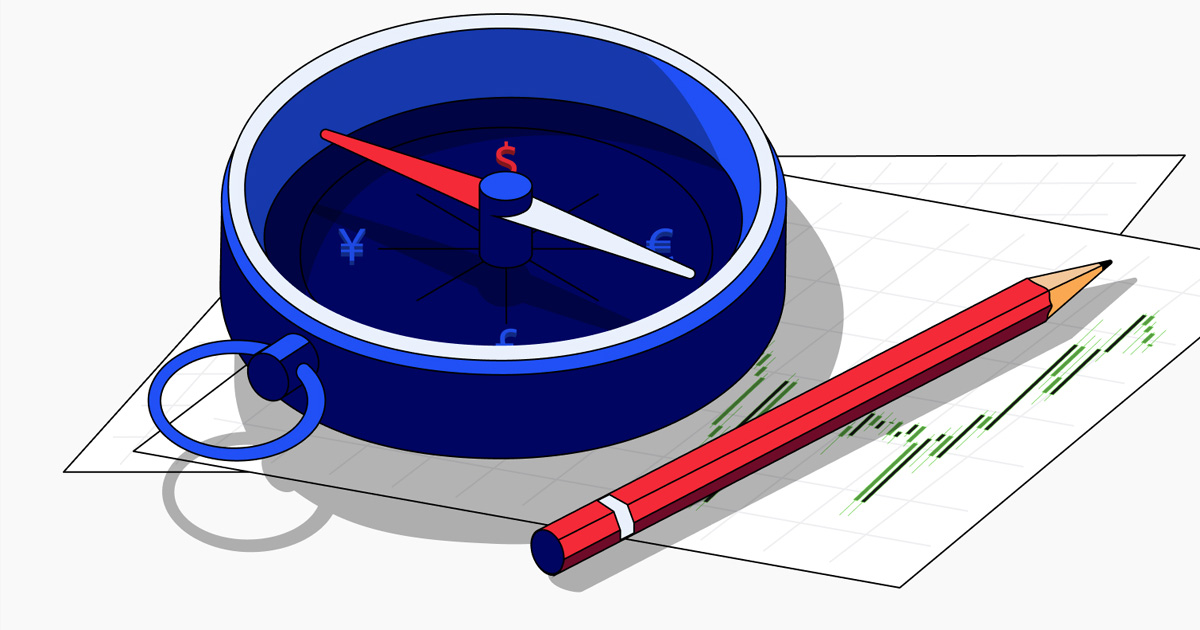How to choose your forex trading style?
How to choose your forex trading style?
Active trading implies many different trading styles and requires more time, as well as certain knowledge and skills to analyze market movements. Active trading mainly uses elements of technical analysis,
-

- by ALLFOREXRATING.COM
- 18th November 2022 | Post Views: 1425

The first thing to note is that there are no good or bad trading styles. Just remember this once and for all. Your trading style may not suit you, your temperament, or your work schedule, but that does not mean it is bad. That's why you have to choose a trading style individually.
What are the trading styles? In order to answer this question, it should be noted that there are active trading and passive investing.
Active trading implies many different trading styles and requires more time, as well as certain knowledge and skills to analyze market movements. Active trading mainly uses elements of technical analysis, volume analysis, price action, wave analysis, Gann methods, etc.
Passive investments (passive trading) are more suitable for investors who do not have a lot of free time. Most often, passive trading is used in the cryptocurrency market, forex (CFDs on indices and stocks), and stock market (stocks, indices, options, and various ETFs). In passive investments, the main emphasis is on fundamental analysis, revenue forecasts of companies, and research sectors that will actively develop in the future, for example, electric cars and everything associated.
If you don't have much free time at all, there is no doubt that your style is passive investing. If a trader lives inside you, you can't live without trading, and you are attracted to trading, and then your way is active trading.
Active trading implies the following main trading styles:
- Scalping
- Intraday trading (intraday)
- Medium-term trading (position trading)
- Algo- and high-frequency trading
Scalping will suit those traders who are able to immediately assess and make decisions under stressful conditions, as well as those who have a huge amount of time and health. Scalping is attractive to fast profits and active participation in the trading process. Calm and patient people who are accustomed to an appropriate way of life and who approach everything in a balanced and unhurried way, who like to think - this style is hardly suitable. Also, scalpers must have a large amount of time for trading. If you have a full-time main job, you probably won't be able to scalp.
Intraday trading. An intraday trader has fewer trades than a scalper and has more time for reflection and analysis. The most successful intraday traders make up to 10-20 trades a day, but some open 1-3 a day. Intraday trading requires more patience than scalping, but it still requires constant concentration and the ability to make a quick decision at the right moment (determination). According to the time factor, trading intraday will take less time than scalping, but still, at least 2-3 hours of the active trading session is necessary, so combining this with your main work will not be easy.
Medium-term trading. This type of trading suits those traders who want to trade calmly and measure without haste. In terms of time, such traders hold deals from a few days to a few weeks. In most cases, this type of trading can be easily combined with the main work because it requires a small amount of time for analysis.
Algo- and high-frequency trading. This style of trading is 100% suitable for programmers and IT enthusiasts who like a digital financial environment. Also, this type of trading will suit those traders who have no time to deal with trading but have the desire and need to earn in the financial markets. But you have to understand that this style of trading suits you if you are the "coder" or if you have the resources to hire a programmer to write EA for your ready-made strategy.
Passive investments. This style of trading will suit investors who want to receive passive dividend income or are aiming for larger results in the future. For such people, the most important thing is planning and research. And don't forget that one of the most effective strategies is still "buy and hold."
Write a Comment
How to choose your forex trading style?
Active trading implies many different trading styles and requires more time, as well as certain knowledge and skills to analyze market movements. Active trading mainly uses elements of technical analysis,

The first thing to note is that there are no good or bad trading styles. Just remember this once and for all. Your trading style may not suit you, your temperament, or your work schedule, but that does not mean it is bad. That's why you have to choose a trading style individually.
What are the trading styles? In order to answer this question, it should be noted that there are active trading and passive investing.
Active trading implies many different trading styles and requires more time, as well as certain knowledge and skills to analyze market movements. Active trading mainly uses elements of technical analysis, volume analysis, price action, wave analysis, Gann methods, etc.
Passive investments (passive trading) are more suitable for investors who do not have a lot of free time. Most often, passive trading is used in the cryptocurrency market, forex (CFDs on indices and stocks), and stock market (stocks, indices, options, and various ETFs). In passive investments, the main emphasis is on fundamental analysis, revenue forecasts of companies, and research sectors that will actively develop in the future, for example, electric cars and everything associated.
If you don't have much free time at all, there is no doubt that your style is passive investing. If a trader lives inside you, you can't live without trading, and you are attracted to trading, and then your way is active trading.
Active trading implies the following main trading styles:
- Scalping
- Intraday trading (intraday)
- Medium-term trading (position trading)
- Algo- and high-frequency trading
Scalping will suit those traders who are able to immediately assess and make decisions under stressful conditions, as well as those who have a huge amount of time and health. Scalping is attractive to fast profits and active participation in the trading process. Calm and patient people who are accustomed to an appropriate way of life and who approach everything in a balanced and unhurried way, who like to think - this style is hardly suitable. Also, scalpers must have a large amount of time for trading. If you have a full-time main job, you probably won't be able to scalp.
Intraday trading. An intraday trader has fewer trades than a scalper and has more time for reflection and analysis. The most successful intraday traders make up to 10-20 trades a day, but some open 1-3 a day. Intraday trading requires more patience than scalping, but it still requires constant concentration and the ability to make a quick decision at the right moment (determination). According to the time factor, trading intraday will take less time than scalping, but still, at least 2-3 hours of the active trading session is necessary, so combining this with your main work will not be easy.
Medium-term trading. This type of trading suits those traders who want to trade calmly and measure without haste. In terms of time, such traders hold deals from a few days to a few weeks. In most cases, this type of trading can be easily combined with the main work because it requires a small amount of time for analysis.
Algo- and high-frequency trading. This style of trading is 100% suitable for programmers and IT enthusiasts who like a digital financial environment. Also, this type of trading will suit those traders who have no time to deal with trading but have the desire and need to earn in the financial markets. But you have to understand that this style of trading suits you if you are the "coder" or if you have the resources to hire a programmer to write EA for your ready-made strategy.
Passive investments. This style of trading will suit investors who want to receive passive dividend income or are aiming for larger results in the future. For such people, the most important thing is planning and research. And don't forget that one of the most effective strategies is still "buy and hold."
| # | Forex Broker | Year | Status | For | Against | Type | Regulation | Leverage | Account | Advisors | ||
| 1 |  |
JustMarkets | 2012 | 36% | 4% | ECN/STP | FSA, CySEC, FSCA, FSC | 1:3000* | 1 | Yes | ||
|---|---|---|---|---|---|---|---|---|---|---|---|---|
| 2 |  |
Hantec Markets | 1990 | 35% | 6% | ECN/STP | ASIC, FCA, FSA-Japan, FSC, JSC | 1:2000* | 100 | Yes | ||
| 3 |  |
Valetax | 2023 | 35% | 1% | ECN/STD | FSC | 1:2000* | 10 | Yes | ||
| 4 |  |
KCM Trade | 2016 | 32% | 3% | ECN/STD | FSC | 1:400* | 100 | Yes | ||
| 5 |  |
Plotio | 1983 | 31% | 2% | STP | HKGX, ASIC, SCB | 1:300* | 200 | Yes | ||
| 6 |  |
FISG | 2011 | 30% | 1% | ECN/STD | FSA, CySEC, ASIC | 1:500 | 0.01 | Yes | ||
| 7 |  |
ATFX | 2017 | 25% | 3% | Broker/NDD | FCA, CySEC, FSCA | 1:400* | 100 | Yes | ||
| 8 |  |
Octa | 2011 | 20% | 3% | ECN/STD | Regulation: CySEC, MISA, FSCA and FSC | 1:1000* | 5 | Yes | ||
| 9 |  |
Youhodler | 2018 | 20% | 2% | Exchange | EU (Swiss) licensed | Up to 1:500 | 100 | Yes | ||
| 10 |  |
Uniglobe markets | 2015 | 20% | 3% | ECN/STP | Yes | Up to 1:500 | 100 | Yes | ||
| 11 |  |
IEXS | 2023 | 20% | 6% | ECN/STP | ASIC, FCA | Up to 1:500 | 100 | Yes | ||
| 12 |  |
TradeEU | 2023 | 18% | 4% | CFDs | CySEC | 1:300* | 100 | Yes | ||
| 13 |  |
RoboForex | 2009 | 16% | 4% | ECN/STD | FSC, Number 000138/333 | 1:2000* | 10 | Yes | ||
| 14 |  |
Axiory | 2011 | 15% | 5% | Broker, NDD | IFSC, FSC, FCA (UK) | 1:777* | 10 | Yes | ||
| 15 |  |
FBS | 2009 | 13% | 4% | ECN/STD | IFSC, CySEC, ASIC, FSCA | 1:3000* | 100 | Yes |











